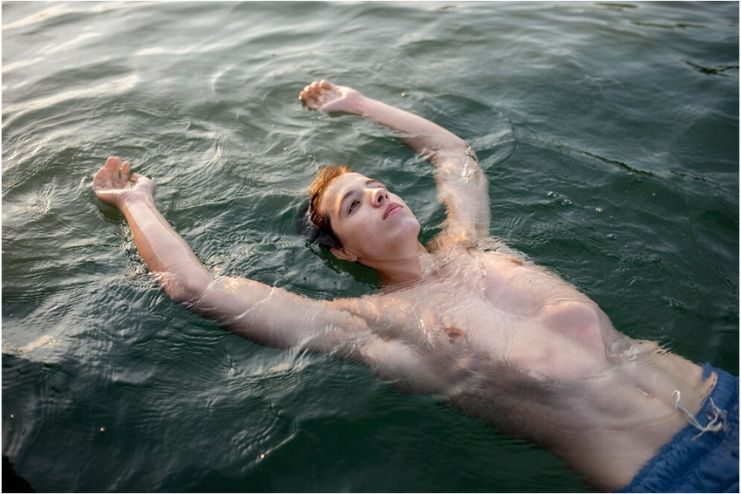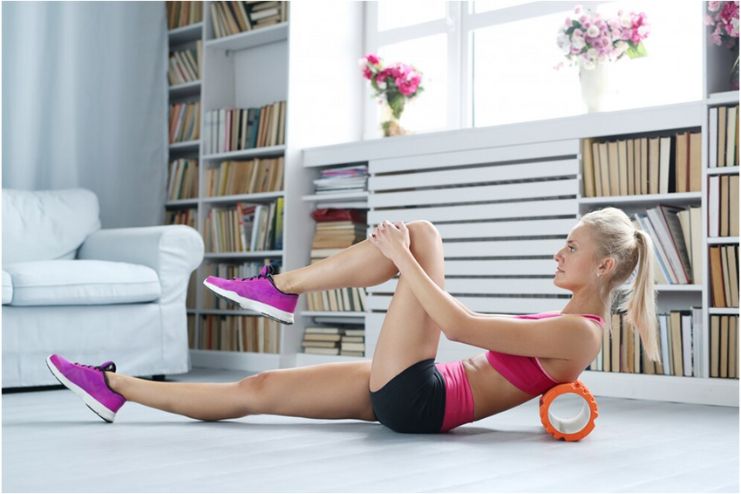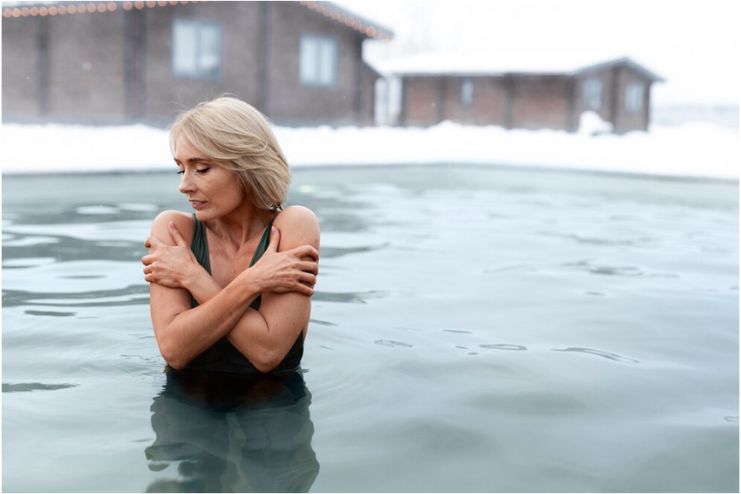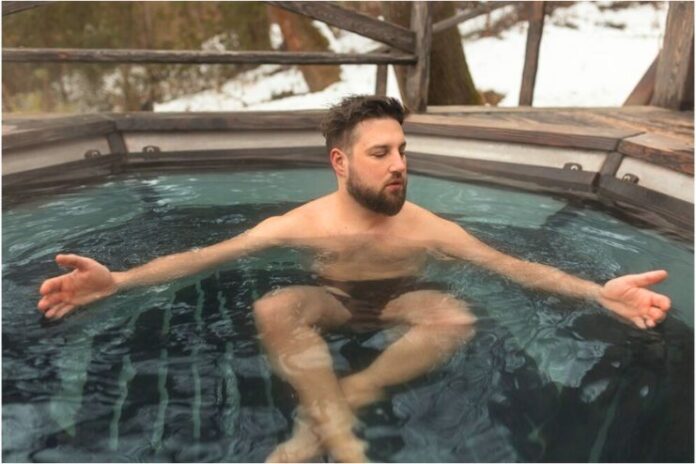AI Contribution
At HealthSpectra, we may use AI to refine grammar and structure, but every piece is shaped, checked, and approved by real people, our expert writers and editors, to ensure clarity, credibility, and care. Learn more..Affiliate Disclaimer
Some links in this article are affiliate links. We may earn a small commission if you make a purchase through these links, at no extra cost to you. We only recommend products we find useful to our readersYou may find ways to ace that intense workout, and soon after, you scout for ways to recover. After an intense workout session, your muscles scream for some relief. This makes it challenging for you even to take a step ahead. This is when having an effective post-workout recovery technique plays a significant role. Now imagine plunging into a pool of ice-cold water. The thought might be chilling, but it’s a great way to recover faster after a good workout. These are called cold water plunges or cold plunges.
Cold plunges or cold water immersion have gained popularity. Athletes and fitness enthusiasts often opt for them as a post-workout recovery technique. They have vouched for their benefits, which makes us wonder if these cold plunges are beneficial, backed by science, or just another internet trend.
The article helps us understand the benefits of cold water therapy, how cold plunges for recovery work, their limitations, and how to effectively incorporate them into the recovery routine.
How Cold Plunges Work

Cold plunges, as mentioned, are a post-workout recovery technique. These involve immersing your body in water with temperatures ranging from 50°F to 59°F for a short time. The cold water makes the body react and helps trigger several physiological responses, which include:
- Inflammation control: Swellings are best reduced when exposed to colder temperatures. Cold temperatures constrict the blood vessels, helping lessen swelling in the overused muscles. This process helps prevent and combat the pain caused by delayed-onset muscle soreness (DOMS).
- Numbing effect: Cold water numbs our nerve endings, as we know. This temporary lack of sensation helps in post-workout pain recovery.
- Hormonal response: When you expose yourself to cold water, you produce norepinephrine These hormones help manage pain and improve mood.
These benefits make cold plunges an effective post-workout recovery tool, especially for sportspersons, athletes, or people who work out with high-intensity
The Science Behind Cold Plunges
Most people support cold plunges due to their benefits. However, a few people are skeptical about using cold plunges. Cold plunges can be beneficial if done right for the right amount of time. Let’s understand the science behind cold water therapy or cold plunges.
What the Research Says
- Benefits:
A recent study in Frontiers in Physiology revealed that cold plunges significantly impact muscle recovery after an intense workout. It has shown a major improvement in countermovement jump (CMJ) and measurable muscular recovery across various athletes, swimmers, bikers, and runners. - Limitations:
Though the benefits are plentiful, it becomes important not to indulge in the overuse of cold water therapy. Suppressing inflammation to a large extent may not always be beneficial, as this natural process aids in muscle repair and growth.
Balancing Evidence and Practice
The benefits of cold water therapy are many and are also backed by science. These help fight acute inflammation, which is essential for muscle soreness. However, indulging in ice baths may not be the right thing to do, as they might interfere with muscle recovery.
Comparing Cold Plunges to Other Recovery Methods

There are many options when discussing post-workout recovery techniques. However, it is essential to compare cold plunges to other popular recovery methods.
- Hot baths: Hot baths are in contrast to cold plunges. They have warm water that relaxes the muscles and promotes blood flow. However, this is a less effective post-workout technique than an ice bath.
- Foam rolling: Foam rolling is another recovery technique that helps improve mobility and reduce tension and stress. However, this technique requires more effort and is, hence, less effective than the cold water plunge benefits.
- Active recovery: Indulging in active recovery and practices such as yoga, exercise, and meditation are also helpful. However, these activities take time and effort.
Now that we understand how various recovery techniques work, we can trust cold plunges to be the most effective. When we wish to recover after an intense run or workout, we need a recovery tool that helps reduce inflammation faster, takes less time, and requires minimum effort. Cold plunges tick all the boxes, making them a perfect recovery technique for post-intense workouts.
Practical Guide to Cold Plunges
Here’s a practical guide for those who wish to try cold plunges or are eager to learn more about the process.
- Duration: You can start with 1 minute and slowly increase to a maximum of 10 minutes.
- Temperature: It is crucial to maintain the water temperatures between 50°F and 59°F.
- At-home setups: You can also indulge in a cold water therapy session at home. All you need is a bathtub with ice water or a DIY tank. You can also invest in portable cold tubs.
- Cryotherapy chambers are also the next best option. These offer extreme cold exposures for short periods but are costlier and not easily accessible.
If you are a beginner, you can opt for ice baths while keeping the following points in mind:
For a practical cold plunge:
- Temperature: Aim for 50-60°F (10-15°C).
- Duration: You must start slow. Start with 30 seconds to 1 minute, and slowly, as you adapt, increase to 10 minutes.
- Beginners: Start with shorter durations and warmer water.
- Progression: Slowly progress and extend the time as you are comfortable.
Remember, shorter plunges for colder water. Avoid overdoing it if you experience excessive shivering.
Who Should Avoid Cold Plunges?

Though cold plunges for recovery promise major benefits for intense workouts post-recovery, they aren’t for everyone. A few people must exercise caution before proceeding with ice water baths.
- Cardiovascular conditions: People with cardiovascular disorders must avoid cold plunges, as this may result in a sudden drop in temperatures. This can stress the heart and pose a threat to people with heart issues.
- Cold sensitivity: Certain conditions, like Raynaud’s disease, can get worse when exposed to cold for a longer period of time. For their safety, such people must also avoid cold plunges.
The people who cannot opt for cold plunges can try alternative post-workout recovery methods.
Balancing Recovery Strategies
When we talk about recovery strategies, there is no one-size-fits-all policy. This is a personal choice that needs personalization.
- Experiment with combinations: Combine cold plunges with other techniques like stretching, yoga, or any other active recovery workout. This helps you address distinct recovery needs.
- Listen to your body: Listen to and understand your body cues, and pay attention to how you feel after each workout. This also helps you better understand your body and assess your fitness goals.
Include cold plunges in your routine, as they are a powerful and holistic tool for recovery.
Conclusion
One highly effective way to recover after intense workouts is cold plunges. These reduce inflammation, reduce muscle soreness, and promote recovery after a workout. They also help you stay alert, prevent fatigue, and improve performance if used at the correct time.
You can get the most out of cold plunges by pairing them with other recovery techniques, such as foam rolling or stretching. Listen to your body, seek professional guidance, and design a fitness routine that best suits you. You must stick to the plan, do what’s best for you, and see significant results in your fitness journey.
References Links:
- https://www.healthline.com/health/cold-water-therapy
- https://pubmed.ncbi.nlm.nih.gov/12617692/
- https://pmc.ncbi.nlm.nih.gov/articles/PMC9518606/
- https://onlinelibrary.wiley.com/doi/full/10.1002/lim2.53
- https://www.frontiersin.org/journals/physiology/articles/10.3389/fphys.2023.1006512/full
- https://www.healthspectra.com/heart-disease-causes-and-effects-due-to-common-habits/
- https://my.clevelandclinic.org/health/treatments/21099-cryotherapy
In this Article



















